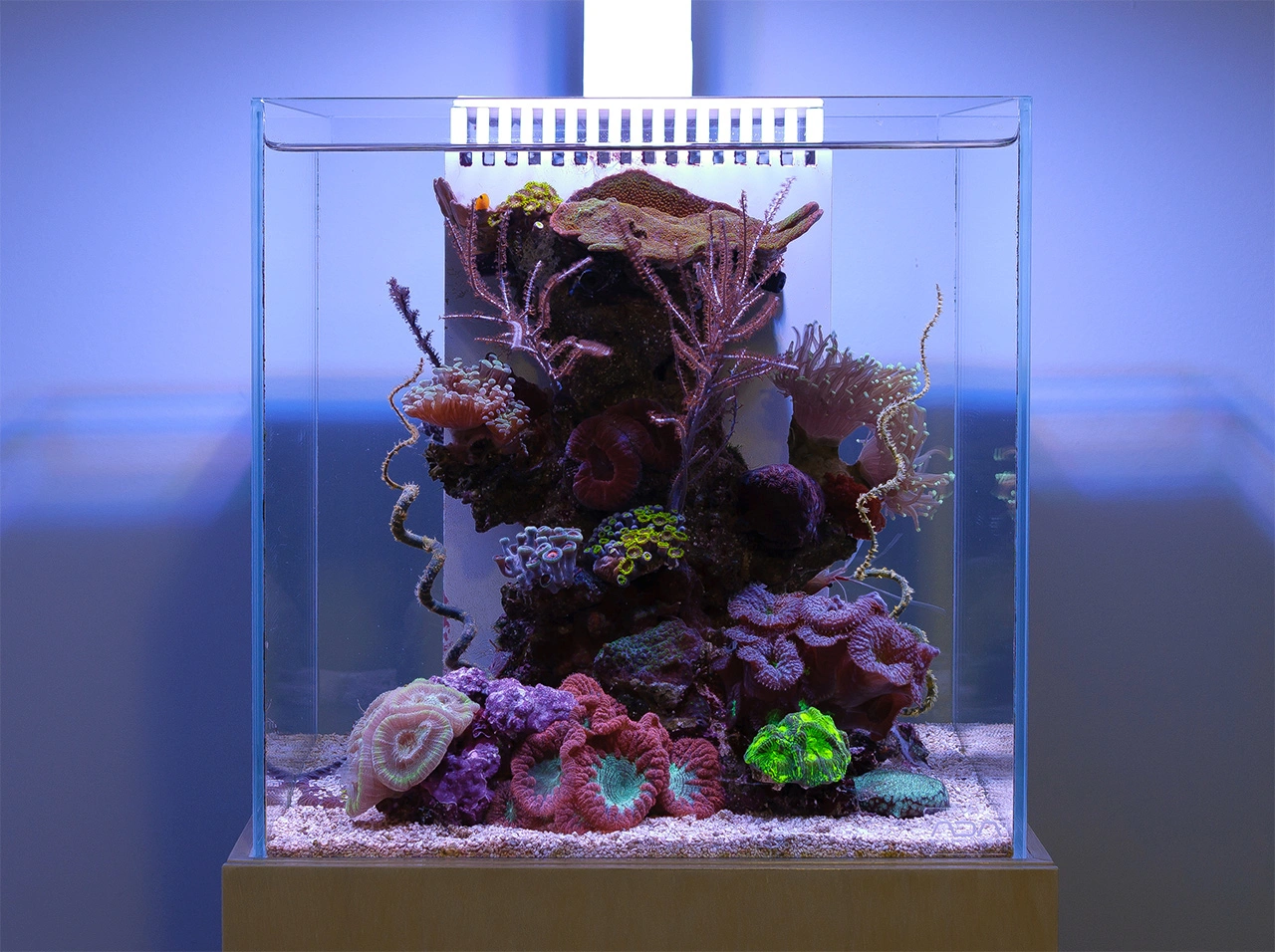Stunning 7-Gallon Reef Tank – NanoTopia's TOTM | NanoReef

Tank Specifications
Volume: 7 Gallons / 27 Liters
Dimensions (L × W × H):
11.8" ×
11.8" ×
11.8"
30.0cm ×
30.0cm ×
30.0cm
Equipment List
- Salt: Red Sea
Frequently Asked Questions
How do I design a clutter-free reef tank?
To design a clutter-free reef tank, focus on using an oversized return pump that provides sufficient water flow, eliminating the need for additional circulation pumps. You can also hide return plumbing in the rockwork for a cleaner look. Consider using a combination of small rubble rock pieces to conceal plumbing and enhance aesthetics.
What is a good approach to aquascaping in a nano reef tank?
Aquascaping for a nano reef tank should emphasize open spaces while providing hiding spots for fish and corals. Utilize natural rock formations to create depth and visual interest. Aim for balance and avoid overcrowding by selecting a few key rock structures and planting corals strategically to allow for growth.
What should my maintenance routine entail?
A proper maintenance routine should include testing water parameters weekly, performing a 20% water change using quality salt mix, and supplementing major elements like alkalinity, calcium, and magnesium as required. Additionally, change GAC every 3 weeks to maintain water clarity and quality.
How often should I feed my reef tank inhabitants?
Feed your fish twice a day in small amounts using a combination of frozen foods like PE Mysis shrimp and high-quality pellets. Additionally, occasionally feed corals with specialized food like Reef Nutrition Oyster Eggs to ensure they receive adequate nutrition.
How can I maintain stable water parameters in my reef tank?
To maintain stable water parameters, regularly test for crucial factors such as salinity, pH, alkalinity, calcium, and magnesium. Make necessary adjustments gradually to prevent shock to your livestock. Consistent water changes with quality salt mix, along with proper dosing of trace elements, can help achieve stability.
What are some signs that my reef tank is out of balance?
Signs of an out-of-balance reef tank may include excessive algae growth, stunted coral growth, and poor coloration in corals. If you notice that your tank has more algae than corals, it may be an indication of nutrient imbalance, prompting you to reassess feeding habits and filtration methods.
What is the importance of feeding corals?
Feeding corals is crucial for their health and growth. Corals rely on the nutrients available in their environment, which can be supplemented through feeding. Regularly providing high-quality coral food diversifies their diet and promotes vibrant colors and robust growth.
How should I approach dosing for my reef tank?
When approaching dosing, monitor your tank's demand for calcium, alkali, and magnesium. If water changes do not suffice, consider a systematic dosing regimen to replace major and minor trace elements. Regularly review your parameters to ensure you're meeting the demands of your coral population.